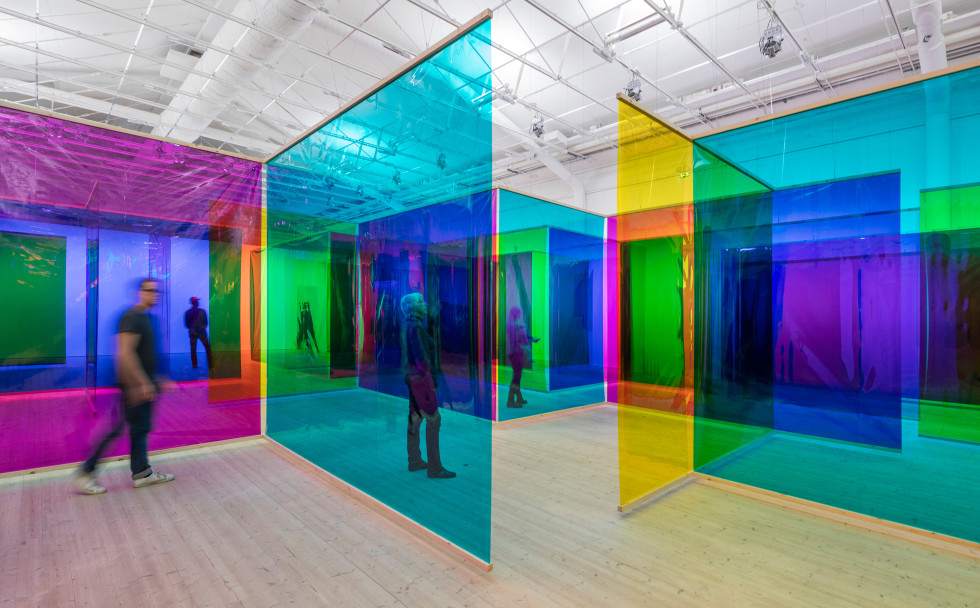
Olafur Eliasson, Seu corpo da obra (Your body of work), 2011 © 2011 Olafur Eliasson. Photo: Anders Sune Berg. Installation view, Moderna Museet/ArkDes, Stockholm 2015
The celestial light of the soapbubble
Lecture by Gertrud Olsson
27.11 2015
Stockholm
Friday 27 November 2015 at 17
In the Auditorium, floor 2.
Included in the admission fee. In Swedish. Moderna Bar is open afterwards
We find the gold shimmering mosaic light in the Ravenna basilicas from the 500s, the transparency in the Gothic cathedrals, and the idea of coloured light as a utopia in modernism. In the 1920s the Bauhaus artist László Moholy-Nagy examined transparency and coloured light. He tried to create a stage design solely with light and shadows, generating an architecture that seemed completely immaterial. For contemporary light artists, Moholy-Nagy is a forerunner.
The lecture also includes perception: what do we see, what do we not see, and what do we expect to see? The philosopher Ludwig Wittgenstein draw attention to the distinction between seeing and realizing. Phenomena require an active observer — able to see and realize the passing existence of a soap bubble.
Gertrud Olsson, architect and PhD at the KTH School of Architecture in Stockholm.
Olsson’s research, in the intersection of architectural technology, and history & theory of architecture, deals with colour, light, perception and building materials such as mosaic, ceramic and glass from ancient times to contemporary structures.
Currently she is studying surface and polychromy from Byzantine mosaic pieces to Islamic tile ornamentation, more specifically the Turkish tile tradition. As a practising architect, running her own company, she has recently designed a new permanent exhibition in the medieval Kalmar Castle in southern Sweden.
Contact: Karin Malmquist
